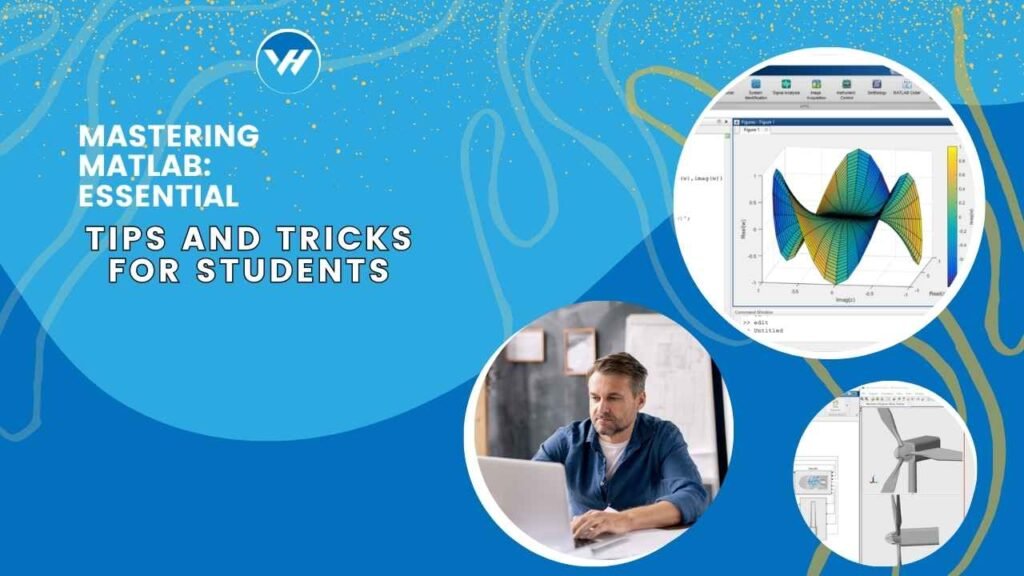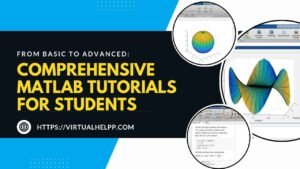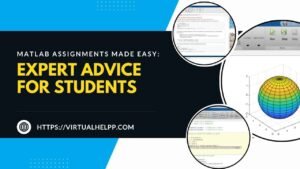Table of Contents
ToggleWhat is MATLAB?
MATLAB (Matrix Laboratory) is a powerful programming environment and tool used for mathematical computations, data analysis, and visualization. For students, especially those in engineering and science fields, MATLAB is more than just a software package—it’s an essential tool that enhances learning and problem-solving capabilities.
Importance for Students
Mastering MATLAB can significantly boost your academic performance and research skills. With its ability to handle complex calculations and data visualization, MATLAB is an invaluable asset in any student’s toolkit. But how can you make the most of it? Let’s dive into some essential tips and tricks.

Getting Started with MATLAB
Setting Up MATLAB
To get started with MATLAB, you first need to install it. Visit the MathWorks website, download the latest version, and follow the installation instructions. Once installed, make sure to configure MATLAB to fit your needs. Set your working directory and preferences to ensure a smooth workflow.
Understanding the Interface
MATLAB’s interface might look a bit overwhelming at first, but it’s quite user-friendly once you get used to it. The main components include the Command Window, Workspace, and Command History. Familiarize yourself with these elements and customize your workspace for efficiency.
Essential MATLAB Commands and Functions
Basic Commands Every Student Should Know
Getting comfortable with basic commands is crucial. Start by learning how to navigate the Command Window. Use commands like clc to clear the screen and clear to remove variables. Script files (.m files) and function files are your go-to tools for writing and organizing code.
Data Types and Variables
MATLAB handles various data types, including arrays, matrices, and cell arrays. Understand the differences and learn how to create and manage variables. For instance, use x = 5 to create a simple variable or A = [1, 2; 3, 4] for a matrix.
Mathematical Operations
MATLAB shines in mathematical computations. From basic arithmetic to advanced functions like sin(), cos(), and log(), MATLAB can handle it all. Master these operations to streamline your calculations.
Working with Data in MATLAB
Importing and Exporting Data
MATLAB supports multiple file formats like .csv, .txt, and .mat. Learn how to import data using functions like readtable() and export results with writetable(). Efficient data handling is key to managing large datasets.
Data Visualization Techniques
Visualizing data is one of MATLAB’s strengths. Start with basic plotting functions like plot() for 2D plots or scatter() for scatter plots. For more advanced needs, explore functions like surf() and contour() for 3D visualizations.
Programming Concepts in MATLAB
Control Flow and Loops
Understanding control flow is crucial for effective programming. Learn how to use if, else, and elseif statements for conditional logic. For repetitive tasks, use loops like for and while to automate processes.
Functions and Scripts
Functions help in organizing code and making it reusable. Learn to create functions with the function keyword and write scripts to automate your tasks. Efficient scripting can save you a lot of time.
Debugging and Error Handling
No code is perfect. Familiarize yourself with common errors and use MATLAB’s debugging tools, such as breakpoints and the dbstop command, to troubleshoot issues. Proper error handling ensures smoother code execution.
Advanced MATLAB Techniques
Matrix Operations
MATLAB’s name says it all—its strength lies in matrix operations. Master basic manipulations like addition and multiplication, as well as more complex functions like eig() for eigenvalues and svd() for singular value decomposition.
Simulink Integration
Simulink is an extension of MATLAB used for simulations. If your work involves modeling dynamic systems, learn how to integrate Simulink with MATLAB to enhance your simulations and model-based design processes.
Optimization and Performance
Optimizing your MATLAB code can make a huge difference in performance. Use built-in functions like optimset for optimization and follow best practices to write efficient code. For performance tips, consider profiling your code to identify bottlenecks.
Getting Help and Resources
Using MATLAB Documentation
MATLAB comes with comprehensive documentation. Use the help command or access online resources to find information on specific functions and commands. The MATLAB community forums are also a great place for advice and tips.
Virtual Help and Tutoring
Struggling with MATLAB concepts or assignments? Virtual Help offers online tutoring and assignment assistance specifically for MATLAB. Whether you need a quick solution or detailed guidance, our platform connects you with experts who can help you master MATLAB efficiently.
Conclusion
Summary of Key Points
Mastering MATLAB involves understanding its basic commands, handling data efficiently, and applying advanced techniques. By following these tips and tricks, you can enhance your MATLAB skills and leverage them for academic success. Remember, practice makes perfect, so keep experimenting and learning!
FAQs
What are the most important MATLAB commands for beginners?
Some essential commands include clc (clear command window), clear (remove variables), load (import data), and save (export data).
How do I troubleshoot common MATLAB errors?
Use debugging tools like breakpoints and dbstop. Check for syntax errors and ensure that variables are properly defined.
What resources are best for learning advanced MATLAB techniques?
MATLAB’s official documentation, online tutorials, and community forums are excellent resources. Consider also seeking help from a MATLAB tutor through platforms like Virtual Help.
How can Virtual Help enhance my MATLAB skills?
Virtual Help connects you with experienced MATLAB tutors who can provide personalized assistance, answer your questions, and guide you through complex problems.
What are the benefits of using MATLAB for engineering students?
MATLAB offers powerful tools for mathematical calculations, data analysis, and visualization, making it an essential tool for engineering students to tackle complex problems and projects.





